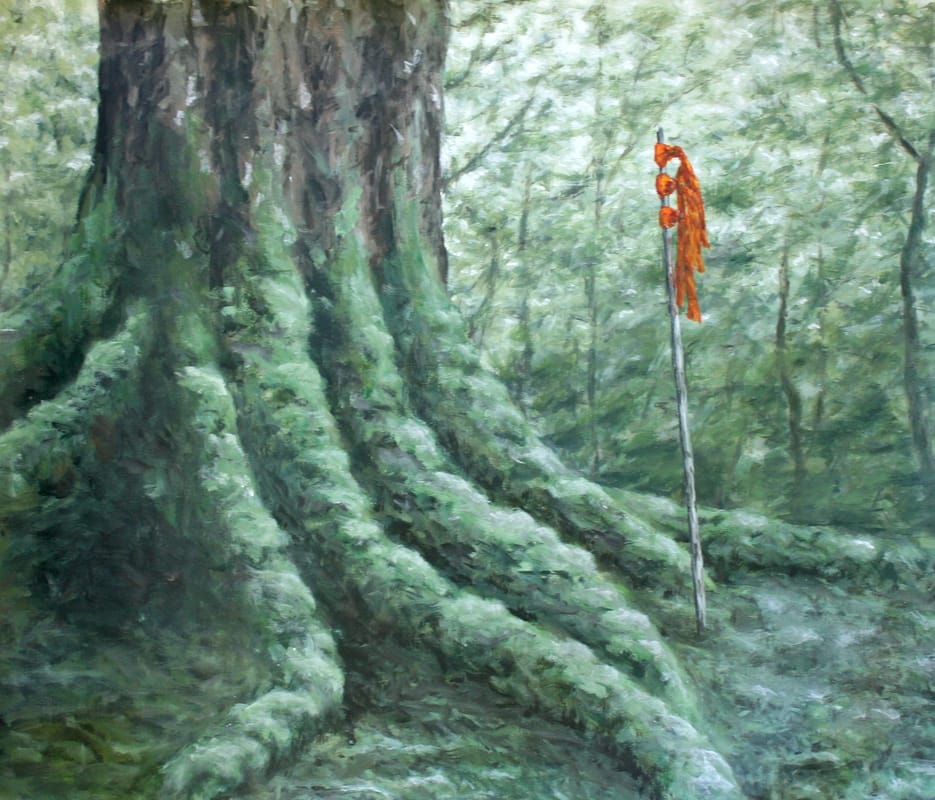Clara Lundgrens evocative painting captures the essence of an ancient forest, focusing on the base of a majestic tree. The scene is a testament to the enduring power of nature and the passage of time.
We see the sturdy base of an old tree. Its roots, gnarled and expansive, are partially exposed, creating an intricate network above the forest floor. These roots are adorned with a lush carpet of vibrant green moss, suggesting a damp, fertile environment.
The ground surrounding the tree is equally captivating, completely blanketed in a thick layer of moss. This creates a soft, almost ethereal quality to the forest floor, inviting the viewer to imagine the springy texture underfoot.
In the background, the rest of the forest is visible, though slightly out of focus. Between the trees, slivers of sky are visible, with gentle rays of light filtering through the canopy. This interplay of light and shadow adds depth and a sense of mystery to the scene.
Standing next to the central tree is a curious element: a staff or stick planted firmly in the mossy ground. At its top, three orange bands are tied, fluttering gently like a flag. This human-made object stands in stark contrast to the natural elements surrounding it, perhaps symbolizing a sacred spot in the forest.
The ambiguity of ”it” in the title ”It Was Here” allows for multiple interpretations, encouraging viewers to reflect on the relationship between nature, human presence, time, and memory as depicted in the painting. This open-ended title adds depth to the visual elements, inviting viewers to contemplate what ”it” might represent in the context of this evocative forest scene.
The overall mood of the painting is one of tranquility and timelessness. The rich, earthy colors of the moss and tree bark, combined with the soft lighting, create a serene atmosphere. The presence of the staff with its orange bands adds an element of intrigue, inviting the viewer to ponder its significance in this primeval setting.
This painting serves as a powerful reminder of the beauty and mystery of old-growth forests, while also hinting at the subtle ways humans interact with and mark these natural spaces.


